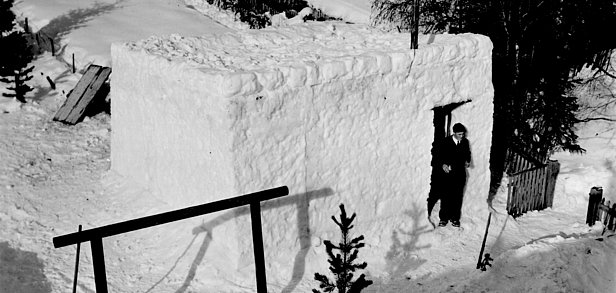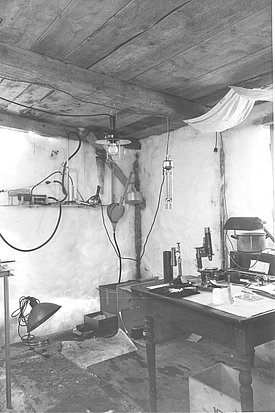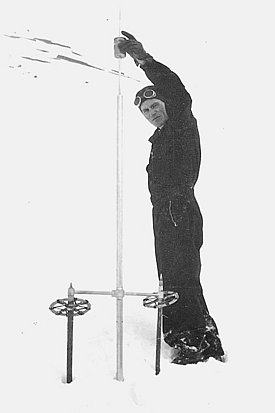Ever since man first occupied the Alps, avalanches have posed a threat. For centuries, it was primarily the inhabitants of the mountains who were affected, together with their cattle and dwellings, but the gradual development of the tourist industry has since extended the risk of damage and, therefore, the interest in avalanche research.
Ski tourism fosters avalanche research ¶
Until the start of the 20th century, the avalanche problem was being addressed largely by individuals, often foresters. These observers described avalanches and categorised them according to their character. Some early works concerning avalanches and defensive structures were published. Promoters of ski tourism, railways companies and hydropower plant operators were making louder pleas for scientific methods to be adopted for avalanche research from the 1920s, and they supported the establishment of the Commission for Snow and Avalanche Research in 1931. It became the first central agency in Switzerland dedicated to researching avalanches systematically.
First research facility on the Weissfluhjoch in 1936 ¶
The members of the Commission soon realised, however, that their interest in avalanches had to extend beyond the summer; they needed to observe the snow in the winter and learn about its structure and the evolution of microscopic snow crystals. For this purpose, they built a first laboratory out of snow in Davos in 1935. To avoid the risk of warm spells threatening not only the experiments, but also their accommodation, in the winter that followed they moved their laboratory, now a wooden shed, up to the Weissfluhjoch, in the middle of avalanche country, and established a study plot. The Commission continued to work there until 1942, when the Federal Government adopted a resolution to establish the Swiss Federal Institute for Snow and Avalanche Research. The timing, during the Second World War, mirrors the great significance attached to avalanche research by contemporary business leaders and politicians. Just one year later, in April 1943, the SLF celebrated the official opening of its new home on the Weissfluhjoch.
Development of new measuring instruments
Besides new premises, however, the scientific discipline of snow and avalanche research needed a methodology of its own and special measuring instruments. Scholars had been developing a variety of measuring instruments since research started in 1936, including a ram penetrometer, a shear test apparatus, and a device to determine the air permeability of snow. Some of these instruments are still being used today, but technical refinements have been introduced in the intervening period of course.
The SLF as the international centre of snow and avalanche research
In the early years, especially during the war, the avalanche researchers sought very little international contact, but a lively exchange began once hostilities ceased. Researchers from the Alpine countries and overseas turned to the Swiss as experts and undertook further studies at the SLF, and SLF employees travelled abroad to assist with local avalanche protection programmes. The SLF was soon recognised as the centre of snow and avalanche research and is still acknowledged as such today.
Multimedia ¶
Historical film about the early days of snow and avalanche research
This 13-minute film from 1948 showcases the former snow and avalanche research at the Weissfluhjoch, including racy skiing descents.
Contact ¶
Links and documents ¶
- Die Schnee- und Lawinenforschung in der Schweiz
Master's degree thesis submitted by the historian Dania Achermann (available in German only)


